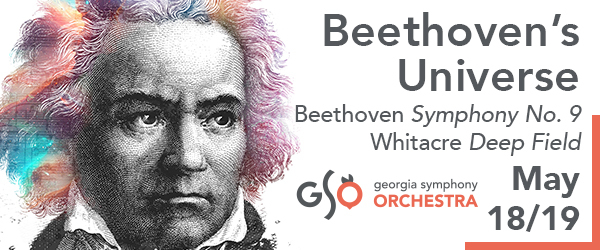Olivia Kieffer | 19 MAR 2020
On February 28, 2020, the New York quartet Sandbox Percussion released their debut album through Coviello Classics, And That One Too. The music on this album is both adventurous and listenable, and from start to finish, is full of delightful surprises. Jonathan Allen, Victor Caccese, Ian Rosenbaum and Terry Sweeney make up the group, which formed in 2011. The album runs 52 minutes, and each piece is the product of long-time collaborations between the composers (Andy Akiho, David Crowell, Amy Beth Kirsten, and Thomas Kotcheff) and the ensemble.
Historically, many percussion groups in the Western music tradition have collaborated with composers to create new music. A few examples include Percussion Group Cincinnati and Russel Peck, Amadinda Percussion Group and György Ligeti, NEXUS and Steve Reich, and Talujon Percussion and Julia Wolfe. And That One Too changes what a listener might expect of an album of music from a percussion quartet in the 21st century. It’s a fresh take on the high art of percussion albums from the 70’s through the 90’s. Shedding the manic, glossy style and aesthetic of many modern percussion groups, Sandbox Percussion has quietly been carving their own route and unique voice for nearly a decade, and this album has been well-worth the wait.
The first track on the album is Andy Akiho’s Haiku 2. Typical of Akiho, it’s a super-groovy ride with seamless transitions from timbre to timbre. The piece was originally scored for trumpet, trombone, bass clarinet, and baritone voice, but appears on the album arranged for tuned ceramic bowls, metal pipes, wooden slats, a metal pot lid, a glass bottle, and a piece of scrap metal. Like a haiku, the music is short and condensed (but repeated a bunch of times, with different vocal inflections each time).
The shining star of the album are tracks 2 through 5; David Crowell’s Music for Percussion Quartet, an exploration of Crowell’s different experiences in traveling environments, in four contrasting movements. The piece is as joyful as it is evocative.
Movement one, “Fluctuation,” puts one in a trance with its gorgeous melodies on metal instruments and moments of unison rhythms between drums and metals. “Sky,” the second movement, brings the listener to a place outside of clock-time. The bowed mallet instruments and electric guitar (Crowell himself on the guitar) start loud and full and in slow waves become quieter over the five minutes.

“An That One Too”
Sandbox Percussion
Coviello Classics COV 91918
duration: 52 ,minutes
Movement three, “Oscillation,” sounds very much like the mbira music of Zimbabwe, but instead of hosho (gourd shakers), we get toms and a bass drum. The drums mark the pulse in the multiple sections in this movement. The mallet instruments phase in an out of time with each other, but always land back with the drums. The last movement, “Landscape”. brings us back to the land of bowed mallets and guitar, but this time with a more bleak and lonely feeling. Crowell’s use of form is masterful, and every moment of the music captivates the listener. It is a well-balanced, overwhelmingly lovely piece of music.
The sixth track on the album is Amy Beth Kirsten’s she is a myth. It’s the most initially surprising piece on the album, because of its emphasis on vocals. The percussion parts sound like paper, sandpaper, and various scratching. The music is both groovy and messy at the same time. There is whistling that sounds like a distant ambulance siren (beware listening to this while driving! It certainly caused me alarm), and in addition to the paper sounds, there are metal jingles and shakers.
Kirsten based the text on the book Don Quixote, as part of her her 90-minute work from 2017, QUIXOTE. Says Kirsten: “I couldn’t help consider what might happen if Dulcinea was fiercely averse to the conventions of courtly love and rejected [Don Quixote]. I was also enamored with the concept of literally living inside the pages of a book: What might that world sound like? What might the book say to me? What might it say to Quixote?” An excellent touch is that Kirsten sings all of the vocal parts on the recording, and her voice is mesmerizing.
Tracks 7 through 9 contain the three movements of Thomas Kotcheff’s work, which inspired the album’s title, not only that one but that one & that too. Part I is entirely wood sounds: claves, vibraslap, woodblocks, slapstick, wood slats, and guiro. Kotcheff wanted to take the orchestral instruments that are normally used as auxiliary, and make them the centerpiece.
Part II slowly builds over 8 minutes, and is all played on drums. The piece has an additive process, followed by several variations. It develops into Xenakis-esque drum mania: the unison rhythms and sparseness combined with absolutely frenetic drumming.
Part III is a jingly metals fantasy. It ascends and descends into high and low metals. The music moves from slow to fast to slow in alternation. In the last moments, it spreads into the sound of church bells on fast-forward, followed by unison hits for the last 2 minutes, with less instruments struck each time, til we are left with one extremely quiet note.
It’s fitting that And That One Too starts and ends with ringing metals. The whole album is sonorous, and, simply put, wonderful. I look forward to hearing more new music from Sandbox Percussion. ■
RECENT POSTS
 Chang and Beck’s “Sonatas & Myths” illuminates distinctive styles of Szymanowski, Dohnányi, and Bartók • 14 May 2024
Chang and Beck’s “Sonatas & Myths” illuminates distinctive styles of Szymanowski, Dohnányi, and Bartók • 14 May 2024 Igniting creativity: ensemble vim merges music and art in vibrant SPARK! festival launch at MOCA GA • 13 May 2024
Igniting creativity: ensemble vim merges music and art in vibrant SPARK! festival launch at MOCA GA • 13 May 2024








.png)